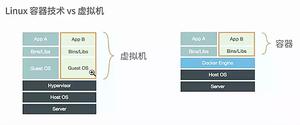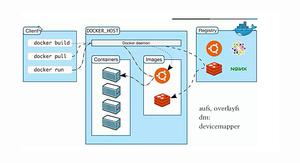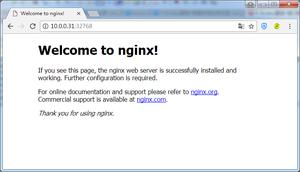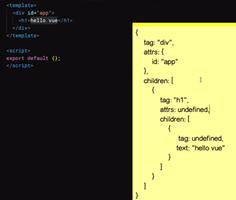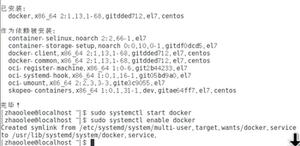Docker各组件的作用和解释

Docker CLI (docker)
/usr/bin/docker
Docker is used as a reference to the whole set of docker tools and at the beginning it was a monolith. But now docker-cli is only responsible for user friendly communication with docker.
So the command"s like docker build ... docker run ... are handled by Docker CLI and result in the invocation of dockerd API.
Dockerd
/usr/bin/dockerd
The Docker daemon - dockerd listens for Docker API requests and manages host"s Container life-cycles by utilizing contanerd
dockerd can listen for Docker Engine API requests via three different types of Socket: unix, tcp, and fd. By default, a unix domain socket is created at /var/run/docker.sock, requiring either root permission, or docker group membership. On Systemd based systems, you can communicate with the daemon via Systemd socket activation, use dockerd -H fd://.
There are many configuration options for the daemon, which are worth to check if you work with docker (dockerd).
My impression is that dockerd is here to serve all the features of Docker (or Docker EE) platform, while actual container life-cycle management is "outsourced" to containerd.
Containerd
/usr/bin/docker-containerd
containerd was introduced in Docker 1.11 and since then took main responsibilty of managing containers life-cycle. containerd is the executor for containers, but has a wider scope than just executing containers. So it also take care of:
- Image push and pull
- Managing of storage
- Of course executing of Containers by calling runc with the right parameters to run containers...
- Managing of network primitives for interfaces
- Management of network namespaces containers to join existing namespaces
containerd fully leverages the OCI runtime specification1, image format specifications and OCI reference implementation (runc). Because of its massive adoption, containerd is the industry standard for implementing OCI. It is currently available for Linux and Windows.
As shown on the picture above, containerd includes a daemon exposing gRPC API over a local UNIX socket. The API is a low-level one designed for higher layers to wrap and extend. Containerd uses RunC to run containers according to the OCI specification.
containerd is based on the Docker Engine’s core container runtime to benefit from its maturity and existing contributors, however containerd is designed to be embedded into a larger system, rather than being used directly by developers or end-users.
Well now other vendors can use contanerd without have to deal with docker related parts.
let"s go through some subsystems of containerd...
RunC
/usr/bin/docker-runc runc (OCI runtime) canbe seen as component of containerd.
runc is a command line client for running applications packaged according to
the OCI format and is a compliant implementation of the OCI spec.
Containers are configured using bundles. A bundle for a container is a directory
that includes a specification file named "config.json" and a root filesystem.
The root filesystem contains the contents of the container.
Assuming you have an OCI bundle you can execute the container
# run as rootcd /mycontainer
runc run mycontainerid
containerd-ctr
/usr/bin/docker-containerd-ctr (docker-)containerd-ctr - it"s barebone CLI (ctr) designed specifically for development and debugging purpose for direct communication with containerd. It"s included in the releases of containerd. By that less interesting for docker users.
containerd-shim
/usr/bin/docker-containerd-shim
The shim allows for daemonless containers. According to Michael Crosby it"s basically sits as the parent of the container"s process to facilitate a few things.
- First it allows the runtimes, i.e. runc,to exit after it starts the container. This way we don"t have to have the long running runtime processes for containers.
- Second it keeps the STDIO and other fds open for the container in case containerd and/or docker both die. If the shim was not running then the parent side of the pipes or the TTY master would be closed and the container would exit.
- Finally it allows the container"s exit status to be reported back to a higher level tool like docker without having the be the actual parent of the container"s process and do a wait4.
How it all works together
We can do an experiment. First we check what Docker processes are running right after Docker installation.
ps fxa | grep docker -A 3# prints:
2239 ? Ssl 0:27 /usr/bin/dockerd -H fd://
2397 ? Ssl 0:18 \_ docker-containerd -l unix:///var/run/docker/libcontainerd/docker-containerd.sock ...
...
well at this point we see that dockerd is started and containerd is running as a child process too. Like described, dockerd needs containerd ;)
Now let"s run one simple container, that executes for a minute and then exits.
docker run -d alpine sleep 60Now we should see it in the process list in the next 60 seconds. Let"s check again:
ps fxa | grep dockerd -A 3#prints
2239 ? Ssl 0:28 /usr/bin/dockerd -H fd://
2397 ? Ssl 0:19 \_ docker-containerd -l unix:///var/run/docker/libcontainerd/docker-containerd.sock ...
15476 ? Sl 0:00 \_ docker-containerd-shim 3da7... /var/run/docker/libcontainerd/3da7.. docker-runc
15494 ? Ss 0:00 \_ sleep 60
Now we see the whole process chain:
dockerd --> containerd --> containerd-shim --> "sleep 60" (desired process in the container).
We do not see runc in the chain, we know containerd-shim takes over after runc has started the container. Also we know that theoretically containerd-shim can survive crash of containerd. But in current docker version it"s not activated by default.
However it"s pretty long chain with possible disadvantages that such chains might have.
How it all works in Kubernetes
You might imagine that Kubernetes do not need Docker-specific parts. As of now, it"s exactly the case...
Kubernetes "speaks" with contanerd directly as depicted in the picture. If interested, check how it was in between.
I hope this might help all Docker users. Give me a hint if something is not precise.
以上是 Docker各组件的作用和解释 的全部内容, 来源链接: utcz.com/z/513936.html

